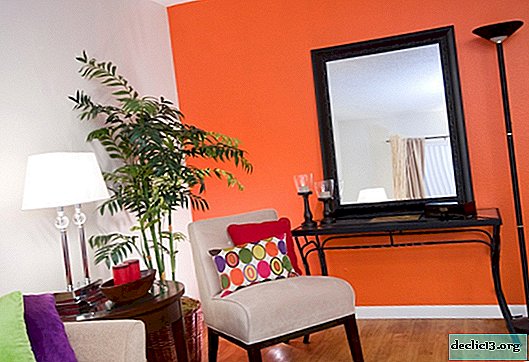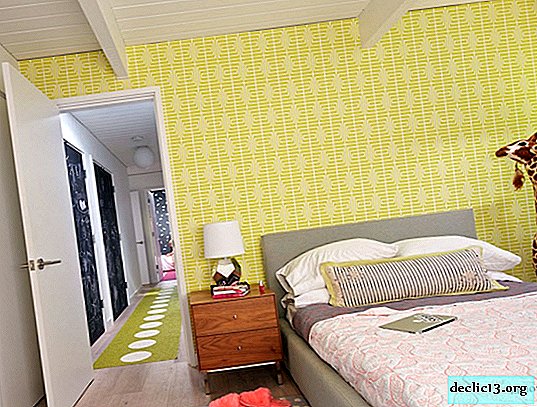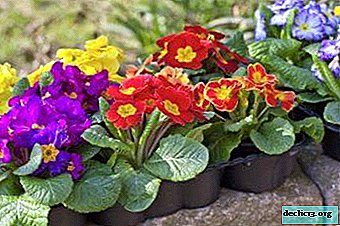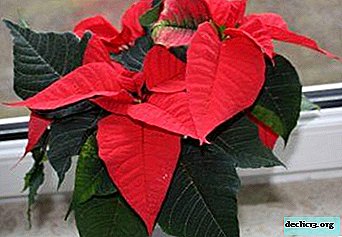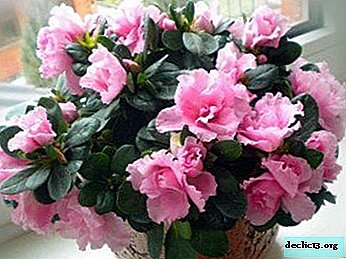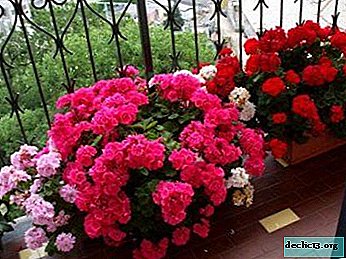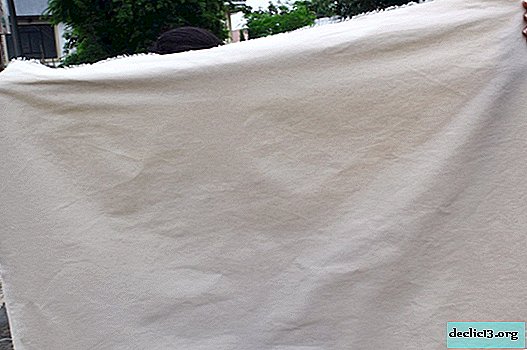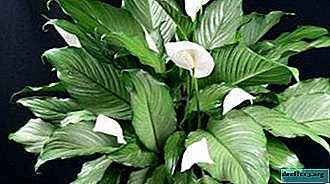Reproduction and transplantation of haworthia and its further care
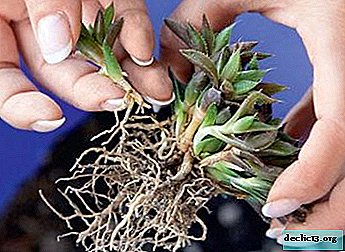
When faced with haworthia for the first time, many gardeners must have wondered: how to propagate this plant, and when is it better to do it? Haworthia belongs to the Xanthorrhoea family, a relative of the well-known aloe and Gasteria. It was named after the 18th-9th century botanist E. Haworth. Haworthia is a succulent, in fleshy leaves it stores moisture and nutrients.
Haworthia leaves are collected in dense basal rosettes. Their color varies depending on the variety from dark green to green with a variety of patterns and strokes of white, pink, light and yellow-green. The arrangement of leaves in rosettes can be alternate (in a spiral, as in most haworthia) or in two rows, as in a truncated haworthia.
Breeding
Haworthia can be propagated in several ways: by daughter rosettes, leaves or seeds. Outlet propagation is the easiest and fastest.
- Havortia propagation by daughter sockets.
- Carefully separate the young outlet from the mother plant.
- Dry the new plant for 1.5-2 weeks.
- Put the baby in a separate pot with prepared soil.
- Lightly moisten the soil and maintain it in this condition until the roots appear.
 Leaf propagation will require more significantly more time..
Leaf propagation will require more significantly more time..- First you need to choose a healthy intact sheet and separate it from the outlet in a circular motion.
- After that, let the leaf dry well for several weeks in a cool place.
IMPORTANT: during drying, wounds will heal on the sheet, the beginnings of roots and future children will appear. Until this time, it is better not to pinch the sheet to avoid further decay.
- Plant the sheet in a prepared container with soil and carefully water it, only slightly moistening the substrate.
- Over time, children will develop from the leaf. Reinforced sockets can be separated from the mother sheet, and the sheet can be used for reproduction if necessary.
- Propagation of haworthias by seeds is a more complex and laborious process..
- Haworthia seeds are sown superficially in a bowl using a light mixture of sand, perlite and sifted earth in equal parts.
- After sowing, the seeds need to be slightly pressed down, but not sealed in the ground and slightly moistened with a spray gun.
- Cover the crops with glass or a transparent bag, remembering to ventilate from excess moisture.
- The first shoots appear in 10-20 days, depending on the type of haworthia. At this time, direct sunlight should be avoided so that small seedlings are not cooked in a greenhouse under the scorching sun. Place the bowl in a place with diffused light and a temperature of about 25 ° C.
- Further care of the seedlings consists in careful watering without stagnation of moisture. Make sure that water does not get inside tiny sockets and water under the root. As soon as the young havoria grows stronger, the shelter can be removed and the sockets can be planted.
Transfer
Havortii are slowly growing succulents, so they will have to be transplanted infrequently: once every 1-3 years. This procedure is performed when the pot is filled with haworthia rosettes. If you prefer to grow haworthia in the form of one large outlet, then you will have to replant every year, separating the young plants, so that they do not deform the main outlet. Haworthia is transplanted in the spring, before the start of a new growth.
Watch the haworthia transplant video:
Priming
 Haworthia can be grown in soils of different composition. It all depends on your goals, time and effort.
Haworthia can be grown in soils of different composition. It all depends on your goals, time and effort.
Some collectors recommend growing haworthia and other succulents in landless substrates based on perlite, tuff, vermiculite or zeolite. The selected component is mixed in equal parts with a fine fraction of gravel, then the mixture is washed from dust. It is almost impossible to fill haworthia in such a soil, but it will develop slowly in an infertile substrate.
Collectors note that in a landless mixture, haworthia develops a powerful root system, and plants look dense and squat. Watering the haworthy should be quite often: 1-3 times a week depending on weather conditions. In winter, watering is slightly reduced.
Another option is the haworthia content in peat-based mixtures. Universal peat substrate is mixed with coarse sand and perlite in equal proportions. If you are not sure about the composition of the purchased soil, then you should heat it: pour it with boiling water or calcine in the oven. The mixture obtained in this way will be more water-absorbing due to peat, so haworthia watering will be required on average once every two weeks.
Haworthia develops much faster in peat substrates., but they can be somewhat stretched. If you contain haworthia in such a mixture, then in winter you need to moisten the plant especially carefully, avoiding overflow.
The land mixture can be completely composed by yourself. The basic rule in this case is that the mixture should be light and loose. We can recommend the following composition: sheet and turf land, charcoal, sand, taken in a ratio of 2: 2: 1: 2.
Remember that such soil mixtures will be heavier and more water-intensive than peat mixtures. Watering haworthia in earthen substrates is carried out after drying of the upper layer of the substrate. In the autumn-winter time, watering is minimized.
Pot selection
As shallow pots, choose wide shallow plates so that haworthia can grow freely in them for a couple of years. If you want to grow haworthia in one outlet, then select a pot whose height is approximately equal to its diameter. In this case, use not too large pots, a pot of 8.5-10 cm in diameter will suffice.
Gardens and compositions can also be made from haworthia.. For these purposes, roomy and beautiful pots, rectangular and round bonsaynits are suitable - any cache-pots that emphasize the merits of these succulents.
ATTENTION: Remember that in a group planting the water will be divided between several plants, so you will have to water the gardens more often.How to transplant?
 For a transplant, prepare a new pot and fresh soil. You may need a knife to separate the children, although in most cases they are freely detachable by hand.
For a transplant, prepare a new pot and fresh soil. You may need a knife to separate the children, although in most cases they are freely detachable by hand.- Holding the soil with the plant, turn the pot over and, with light patting movements along the bottom of the pot, remove the plant.
- If necessary, separate the children, clean the sockets from diseased and dried leaves, shake off the remains of the old soil.
- Inspect the root system and remove rotten roots.
- For peat and land mixtures, make drainage from expanded clay or broken clay shards with a height of 1/5 to 1/3 of the height of the pot. For landless substrates, drainage is not needed.
- Make a slide from the substrate, spread the roots of haworthia on it and evenly fill it with soil to the level of the lower leaves.
- Spread and compact the substrate, and then add more if the mixture has settled strongly. Properly planted haworthia should not stagger in a pot. If this still happened, then you need to deepen the landing.
Care after breeding and relocation
The most important at this moment is the drying of the plant for a period of 1-1.5 weeks. This time is necessary so that all wounds formed during division or transplantation are healed. In the first month, shade haworthy from direct sunlight. During this time, the plant will take root and begin to consume water. After that, you can place succulents in the open sun.
Proceed with the first top dressing in landless substrates no earlier than 1.5 months after transplantation. For peat mixtures - after 2-3 months, and havortia in soil soils should be fed for 5-6 months after transplantation.
TIP: The nitrogen concentration in fertilizers must be equal to the concentration of phosphorus and potassium or may be lower. Otherwise, the fertilizer will not bring benefits and spoil the appearance of the plant.You can find out more about the care of Haworthia at home here.
Conclusion
Growing haworthia is a long process that requires patience.. At the same time, succulent haworthia are undemanding in care and cost a small amount of water. These plants are suitable for busy people. Small haworthy rosettes, carefully planted in pots, will delight you for many years with their bizarre and dense leaves.

 Leaf propagation will require more significantly more time..
Leaf propagation will require more significantly more time.. For a transplant, prepare a new pot and fresh soil. You may need a knife to separate the children, although in most cases they are freely detachable by hand.
For a transplant, prepare a new pot and fresh soil. You may need a knife to separate the children, although in most cases they are freely detachable by hand.